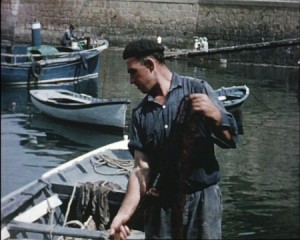
Cortometraje documental sobre la costa vizcaína que hace un recorrido desde la playa de Ereaga hasta el Cabo Matxitxako. En la película se pueden ver imágenes del Puerto de Bilbao y de las playas de Ereaga, Arrigunaga, Azkorri y Sopelana. También se aprecian las localidades vizcaínas de Barrika, Plencia, Gorliz, Armintza, Bakio y San Juan de Gaztelugatxe.
Documentary short about the Biscayne Bay that depicts a tour from the Ereaga beach to Cape Matxitxako. The film shows images of the Bilbao Port and the beaches in Ereaga, Arrigunaga, Azkorri and Sopelana. Local Biscayne places are also seen: Barrika, Plencia, Gorliz, Armintza, Bakio and San Juan de Gaztelugatxe.
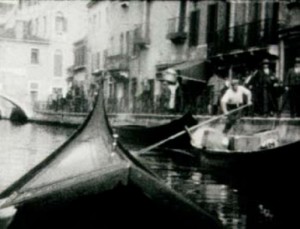
"Travelogue with intertitles of Alexander Black's trip to Europe in 1928. It includes footage of air and sea travel, a phantom ride in a gondola, and footage of Black himself feeding pigeons in Venice, Italy." UC Berkeley Library.
"Edited film with intertitles documents the round the world cruise of the Fleischmann family and friends on board the yacht "Camargo," Human Studies Film Archive, Smithsonian Museum.
"The newsreel begins with the departure of the ocean liner -'Britannic'- on its maiden voyage from Liverpool to New York; 28th June 1930. Further scenes include an item on the Liverpool and Manchester Railway Centenary Exhibition held in 1930 at Wavertree Park - visitors are seen wandering around the various exhibits, which comprise of both old and new locomotives." (NWFA Online Database)(br>
"The grand rail exhibition at Liverpool's Wavertree Park on 20th September 1930 marked the centenary of the Liverpool and Manchester railway. In this fascinating glimpse of a significant event in railway history, enthusiasts admire the gleaming locomotives, which include North Star and a replica of the Rocket as well as more contemporary models from the LMS, LNER, GWR and Southern rail companies." (BFI Player)
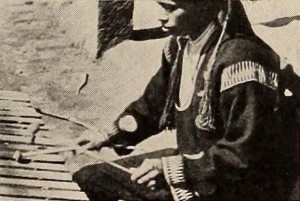
"Opening with a superb trick title in Kodachrome, Guatemalan Rainbow, by the late Ripley W. Bugbee and Robert W. Crowther, carries the audience on an ocean voyage from New York City to the mountain villages of Guatemala, where Mayan mysteries are still celebrated and where the world is a riot of indescribable color. No sequences of the leisure and pleasure of shipboard life have excelled those in this picture. Dexterously, the ritual of afternoon tea was captured with the same finish as if the scenes had been directed in a studio. Active sports and lazy afternoons are recalled in the picture with idyllic beauty. After several minutes of rather less interesting and distinguished footage, the production reaches another high in the presentation of the descendants of the Mayans, whose markets, customs and religious observances are dramatically and expertly chronicled. The whole is accompanied by a satisfactory musical setting." Movie Makers, Dec. 1938, 619.
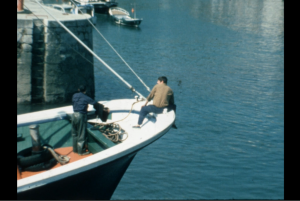
Itsasoko bizimodua.
El filme retrata la forma de vida en la mar en Lekeitio
The film portrays the life on the sea in Lekeitio.
"Ship sails from Chicago, visits Japan's ports, cities, villages, etc. Views of modern with traditional." UC San Diego Library.
Edited film "chronicling travel through the Caribbean including scenic landscapes, cities and villages, dance, local markets and fishing. Wells travelled on the M/s Stella Maris II. Locations filmed include Puerto Rico, Saba St. Kits, Gaudelupe, St. Lucia, Barbados, Paramaribo, Tobago, Trinidad, Grenada, St. Vincent, Dominica, Martinique, Fortress of San Felikpe Del Morrow (San Juan), For Christianvaern, Fort Fleur depee XVIII siecle, and Sam Lord's Castle," Human Studies Film Archives, Smithsonian Museum.
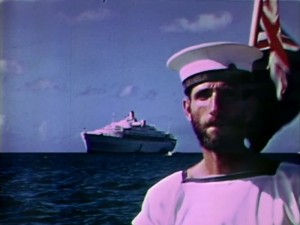
"Hansen visits a Caribbean French colony, popularly referred to as Martinique. Much like Hansen's previous travels, he focuses on the colorful and exotic landmarks of the island." UC San Diego Library.
A travelogue of a cruise in an unknown area of the Mediterranean Sea.
Total Pages: 4